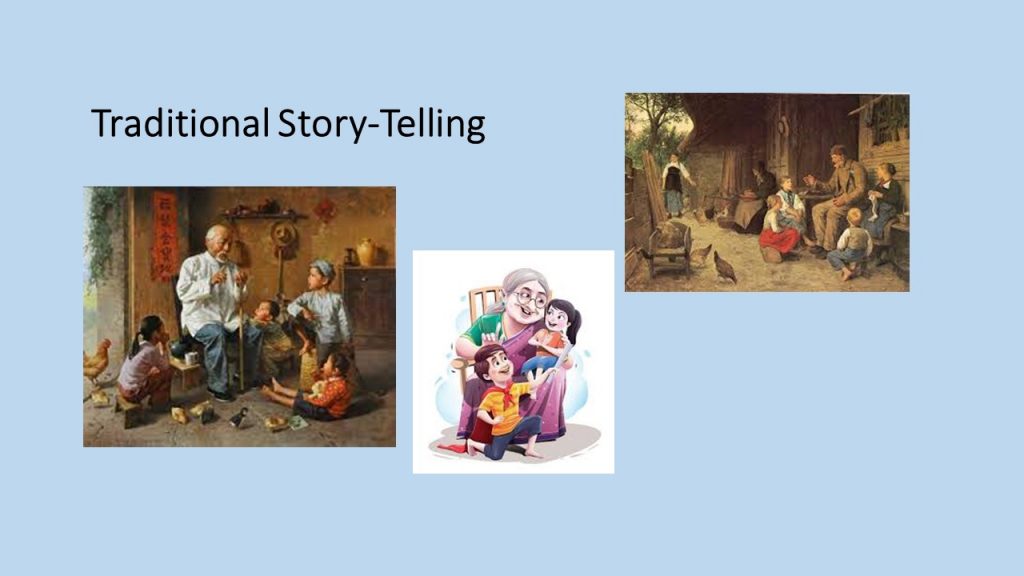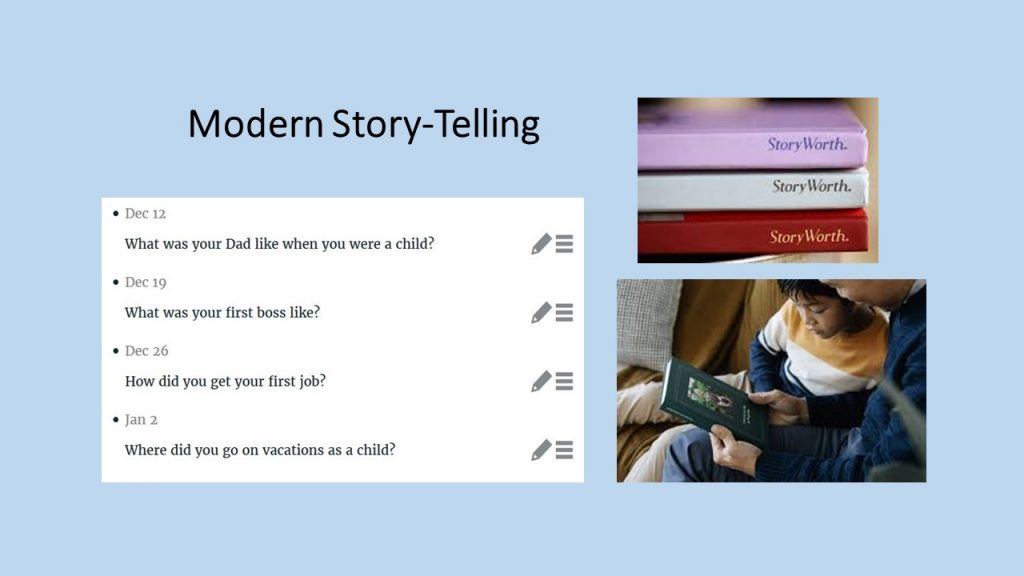
134. Storytelling |說故事
– Musings of Dr. Jamie C. Hsu, 3.2.2022
When we were little, before there was TV, computer, or even radio, the most common after-dinner entertainment was listening to adults tell stories. They would tell us how the world used to be, and how they grew up in a big family. That was how we got connected with our ancestors and their hometowns. It was fun when the memories of the elders did not agree with one another and caused some friendly arguments and teasing. Word-of-mouth and storytelling were the dominant ways of passing along information and sharing family cultures.
Even in school, when we didn’t have access to the library or other information sources, what the teachers told us and what was printed in the textbook became our knowledge source. There was no easy way for youth to question or challenge the adults and elders.
Fast forward a few decades and the situation is almost reversed. Kids and youths are growing up in the digital and information world. They often times know more about new knowledge and skills than the elders. As an MBA professor, I was constantly challenged by the students about the latest news in the corporate world. It forced me to stay current and be humble. I became more of a facilitator, coach, and mentor than a knowledge transmitter.
Lately, our daughters and grandkids have shown interest in knowing what lives in our memory, and not in the digital world. They want to know more about us, our youth, and what things were like back then. Through a platform called “StoryWorth,” they pose a question of interest and ask us to answer it. This really brings back a lot of interesting memories for my wife and me, and it allows us to reminisce about the good old days. Our answers give our kids and grandkids something short to read and allow them to get to know us better. These weekly stories will be bound in a nice book for them to keep.
In the modern world of time-strapped living, the traditional storytelling around a fireplace or dining table may not be feasible. In this rushed world, even reading a long biography may be a burden for the kids. We hope this weekly Q&A style of short communication will be a nice way to tell our story to the next generations.
You may want to give it a try, the modern way of storytelling.


說故事 (2022/03/02)
-作者 許俊宸博士
-中譯 薛乃綺
當我們還小的時候,沒有電視、電腦、甚至是收音機,最常見的飯後娛樂活動,就是聽大人講故事。他們會告訴我們過去的世界是什麼樣的,以及他們是如何在一個大家庭中長大的。這就是我們與祖先以及家鄉建立連結的方式。當長輩們的記憶彼此不一樣的時候,就會開始互相爭論、戲謔,很是有趣。口耳相傳和講故事都是傳遞訊息和家庭文化的主要方式。
即使在學校,當我們無法訪問圖書館或其他信息來源時,老師告訴我們的內容以及課本上的內容,成為我們的知識來源。年輕人沒有簡單的方式來質疑或挑戰長輩或是老一輩的人。
最近的世代中,情況幾乎是整個翻轉過來,小朋友跟 青少年在數字及資訊的世界中長大。他們往往比長輩們更了解新知識和新技能。作為一位MBA的老師,我經常受到學生們對於企業界最新消息的挑戰。這樣的狀態迫使我要保持最新狀態、而且更加謙虛。我變得更像是一個啟發者、教練、和導師,而不是一個知識傳播者。
後來,我們女兒及孫子們對於我們的舊時回憶、不是數位的花花世界,開始覺得有興趣。他們想要了解我們更多、我們過去的青春以及當年的故事。於是我們就利用了一個名叫作Story Worth的平台,讓他們提出感到興趣的問題,並且讓我們來回答。這真的讓我跟我太太回想起過去很多有趣的回憶,勾起我們想起過去的美好時光。我們的回答讓孩子們和孫子們有一些簡短的東西可以讀、可以看,讓他們能夠更了解我們。然後再把每個禮拜講的故事,集結成冊,讓他們可以保存。
在講究快速效率的時代中,在現代生活的方式中,圍繞壁爐或餐桌講故事的傳統方式或許行不通了。在如此匆忙的世界裡,即使是閱讀我們的長篇傳記,也可能變成孩子們的負擔。我們希望用這種每周問答的簡單方式,來跟下一代講述故事、作為流傳,的確不失為一個好方法。
你也不妨试一试这现代說故事的方法。


